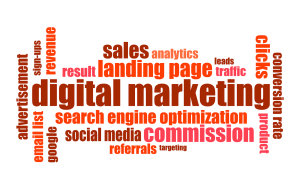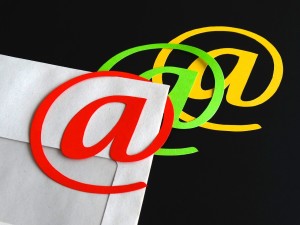How Unconventional Solutions To Marketing Can Really Work

Unconventional marketing can sometimes be the spice to attract customers to your brand.
Marketing is an important part of your business’ growth. However, with so many companies conducting campaigns every single day – consumers can often become bored. Therefore, the best marketing campaigns can be a little unconventional.
Unconventional Ideas That Worked
Cards Against Humanity are experts at unconventional marketing ideas. One year, on Black Friday, instead of following the traditional trend of lowering costs, they increased them by $5. This strategy increased sales on the day and for a period afterwards.
Another year on Black Friday, the company invited customers to buy nothing for $5. The campaign raised $71,000 on the day, with some customers making multiple purchases. The company split the money between members of the team; most of whom donated the funds to charity.
Rudy’s BBQ demonstrated that you don’t have to be a big or global business to be successful at unconventional marketing either. They regularly use negative statements to promote their brand. One billboard expressed they were the worst BBQ in Texas while another misspelt sauce. They also regularly engage audiences on social media – even when they are in one of their restaurants.
Despite these negative terms within their marketing slogans, trade is high, and they have numerous positive reviews online. It has also helped them grow from one to three sites.
Why Does Unconventional Marketing Work So Well?
The two examples show exactly how unconventional marketing can improve sales. Both present an inverse of an established trend such as a seasonal sale or the positive re-enforcement of a brand’s service.
Yet, both businesses succeed.
One of the main reasons for this is because unconventional marketing disrupts normal consumer expectations.
The human brain is conditioned to identify patterns, so people expect to see certain marketing promises and slogans. Therefore, audiences tend to ignore much of the marketing materials presented to them.
However, unconventional tactics break the familiar pattern. This forces the audience to examine the marketing literature presented more closely.
As they pay more attention; the audience remembers the brand more effectively.
In addition, thanks to social media, unusual and humorous items are shared more frequently. Therefore, the reach of such campaigns can grow organically. The more people that see your marketing materials, the greater the sales.
Finally, consumers sometimes want to test your assertions. If you claim to be the worst, they’ll want to see for themselves.
Unconventional Tricks You Can Make
The above two examples aren’t the only unconventional tactics you can try. There are numerous other tactics you could use; here are some examples:
Weird Discounts: You don’t have to increase prices to stand out in a sale. Most discounts are presented as a multiple of five (5%, 10%, 15%, etc). Instead, try for a different discount like 6.22% or 10.91%; something that is a little more unusual. These tend to work because the consumer concentrates more on the fraction rather than the whole number.
Market Another Brand: Create another brand and market that one. An excellent example of this would be Compare The Market. They advertised Compare The Meerkat instead, where a loveable meerkat would complain about all the people accidentally landing on his site instead of Compare The Market. The campaign took off so much that even after several years the characters are still around.
Send Them Cake: If you’re a local brand, and you have a marketing list, why not send a small gift. Cakes, doughnuts and flowers are typical options, but you can be creative.
Conclusion
Sometimes typical marketing tactics just don’t work. Instead, you have to be a little less conventional to grab the attention of your target audience. Unconventional marketing can take many forms and is only limited by your imagination.
What unconventional marketing tactic have you tried? What will you try next?
Let us know in the comments below.
Read post Post a Comment. Tagged in: marketing, Online Marketing, unconventional marketing
7 Of The Most Brilliant Holiday Marketing Campaigns Ever

Get the most out of your holiday season and start planning your marketing campaign now.
The holiday season often provides us with examples of the best marketing campaigns. While some campaigns will be created by large organisations with significant budgets, there will still be aspects even the smallest companies can learn from.
So, what are seven of the most brilliant holiday marketing campaigns ever? Here is our list.
1. Coca-Cola And The Peace In The Mall Advert
Coca-Cola might be more famous for the polar bears sharing a bottle of the soda drink, but recently they took a different turn. In this holiday campaign, they had a video of two people fighting in a mall over a jacket. They called peace to enjoy Coca-Cola products together.
This advert plays on a lot of holiday elements, including the concept of peace on earth and how lots of people feel about shopping during the holidays.
2. WeWork
Business service providers often find it challenging to pull off holiday marketing campaigns. However, WeWork, the co-working and office space provider, discovered they could find a campaign that worked well.
It started with four articles in their magazine, Creator. In the articles, they discussed the best holiday gifts, and each had a theme such as the personal touch, family, digital nomad, etc. Each of the products featured in their articles was from a WeWork member company. This helped to support its community of creators.
To grow the campaign and spread the word of their gift guide they created their own hashtag #wwgiftguide, which became the driving force behind their campaign.
3. Dollar Shave Club: Holiday Shave Set
The Dollar Shave Club are not shy of changing the marketing landscape, and their previous campaigns have demonstrated creativity, humour but also careful marketing. One holiday campaign certainly stood out.
By incorporating typical Christmas traditions like the ugly sweaters against their holiday products and how they can spice up the standard holiday monotony, Dollar Shave Club created a memorable advert.
The video itself, whether advertising anything or not, was perfect because it was funny enough that it encouraged shares. Therefore, the visibility of the brand name grew with little additional effort.
4. Microsoft Making Peace
Microsoft took a similar approach to Coca-Cola above by having a video that markets the goodwill that should be shared by all during the holiday season. However, instead of being between two customers, it was between them and their rivals: Apple.
The advert starts with employees leaving their store to deliver a special message to their Apple store counterparts down the road.
The message is not just poignant for the season, but with the children singing carols in the background, there is a cute element that plays on holiday memories for many.
5. Starbucks And The Red Cup
While some campaigns only run for one or two years, Starbucks often run a similar campaign every year: their red cups campaign. When one year they had plain cups, there was outrage from fans.
Part of their marketing campaign was to ask customers to create images representing their red cups. The best images were declared winners – adding a gamification aspect to their holiday campaign.
6. John Lewis Presents Buster The Boxer
The 2016 holiday ad for John Lewis featured Buster the Boxer. The dog became popular around the world and soon became an online hit.
What is special about their campaign is that the brand didn’t just use it for their TV commercial or social media – but they had an entire section of their online store dedicated to Buster and his friends.
As part of the campaign they had an interactive video where you could explore Buster’s garden. Their campaign was successful because it was funny, heart-warming, and interactive.
7. Melanie Duncan And Holiday Marketing Tips
One of the top marketers on the net is Melanie Duncan. To keep her marketing momentum going through the holiday season, she had a perfectly planned series of blog posts and marketing emails.
The campaigns started early in the fall with an article about creating success in the next year. Then she moved her articles onto Christmas and how readers could plan their own holiday campaigns.
The beauty of this campaign was that Melanie Duncan published all of the articles before Halloween. Therefore, readers were given plenty of time to act upon her advice.
Conclusion
Holiday marketing is highly valuable. Many consumer markets make the majority of their sales during this period, and it can be very competitive. If you want to achieve success this year, you should plan a great holiday campaign months in advance. That is why you should be thinking of Christmas now.
Have you started your holiday planning? What campaigns have you done in the past?
Let us know in the comments below.
Read post Post a Comment. Tagged in: Holiday Campaigns, Holiday Marketing, Online Marketing
3 Basics Of Lead Generation

Lead generation is important if you want to grow your business.
There is a lot of choice in today’s world and your prospective customers could choose you, or another provider, to solve challenges they are experiencing.
When looking for solutions to problems, customers will often use up to three social media channels to research products or brands. Interaction with leads on social media will allow you to collect information on prospective buyers of your products/services to help you market to them.
This might seem pointless, as you may think that if the customer is researching the product then they are ready to buy. However, this isn’t always true. Only 2% of purchases are completed on the first interaction and 3% happen on the second interaction.
Amazingly, 80% of purchases can occur between the fifth and twelve interactions so to ensure you have the chance to reach this number of interactions, you should develop a strong lead generation process.
Here are the three basics of a good, lead generation system.
1. Definition Of Your target Audience
You need to decide who is interested in your product, needs it, and can afford it. Not everyone will match all three criteria.
You can use various demographics to build up your ideal customer profile. This might include: age, gender, financial resources, area they live in and likes/interests. It might also be useful to imagine your target audience as a real person. Give them a name, a job, and a history. This contextualises your ideal customer and makes them seem more real.
At the same time try to identify:
- Their pain point – Why they need your product/service.
- Objective – What is their objective in getting you to solve their problem.
- Information sources – What do they use to research products/services (i.e. social media, search engine, local media, etc.)
From this information, you can create ideas for marketing your business and its solutions.
2. Content Marketing
Content is a valuable resource for lead generation. There are over two million blog posts published every day, and enough YouTube videos published every second to take 24 hours to watch. The best content marketers develop strategies that attract target audiences with useful information that helps solve their issues.
Articles, ebooks and social media updates all help businesses to collect details such as email addresses, names, and budgets. With this information, you can create more content that is relevant and focused on the needs of the prospect.
For all of this to happen, you need to plan. Create content that builds a story and trust. You can’t develop a strong lead generation system by just producing something in five minutes. It takes time and analysis to create an effective system.
3. Lead Management Process
This is the process where you manage leads from their initial interaction with the business up to the sale. Using the best tools and data monitoring assets available, your marketing team should be able to give you a detailed overview of the best ways to spend your marketing budget to achieve success.
If you want to develop an effective process, you need to follow six important steps. These are:
- Identify the metrics to measure
- Define when a prospect is sales ready
- Create a sales funnel with stages and status
- Design and implement lead processing and routing
- Develop a model for lead scoring
- Implement a combined sales and marketing SLA
With this in place, you can ensure you are creating leads, processing them through a pre-determined and measured marketing path, and look to close the deal at a point when you know the prospect is going to be receptive.
Conclusion
Your audience has a choice. You need to make sure that when they make a final purchasing decision, you are at the top of their list. To do this, you need to identify your ideal customer, create a plan for your marketing content and produce a system to process leads which highlights when to pass a lead onto sales.
How is your lead generation system? Have you created any lead generation processes?
Let us know in the comments below.
Read post Post a Comment. Tagged in: lead generation, Online Marketing, Small Business
Why Email Will Remain Important Even With More Messaging Options
 With the rise of more marketing options, it may seem that email marketing will become obsolete. However, email marketing has been around for a long time and has faced numerous challenges when it comes to marketing messaging online. For instance, social media has long been thought of as a way for businesses to connect with their audience but it has failed to achieve the success email marketing has.
With the rise of more marketing options, it may seem that email marketing will become obsolete. However, email marketing has been around for a long time and has faced numerous challenges when it comes to marketing messaging online. For instance, social media has long been thought of as a way for businesses to connect with their audience but it has failed to achieve the success email marketing has.
Now with new instant chat messages being deployed and mobile marketing being used by more organisations, email marketing would seem to be at risk again, though the possibility of this is fairly low. However, there are many reasons why email will remain important for a long time to come.
Trust Is The Key Aspect
74% of consumers prefer to receive promotional messages via their email accounts. This is because the consumer feels that they are giving you permission to contact them via their email accounts. It shows a high level of trust and therefore, half the battle is won on converting the contact to a customer – you just have to demonstrate why they should buy that product.
With social media, mobile and instant messaging, the consumer doesn’t need to give permission to be contacted. Therefore, many customers are wary of marketing messages that are delivered this way as they don’t trust them.
In the UK, this has been demonstrated by injury claims and payment protection compensation. Lawyers from both niche industries have been sending out numerous messages via mobiles and the phone, offering customers thousands in compensation. The biggest problem is that they are not targeting their customers and are just sending messages to every number or contact.
Then the callers claim that they hold records indicating you are owed money, often thousands. This is often inaccurate. And the mistakes are compounded by the use of automation and recorded messages.
Apart from being in breech in the country’s data protection laws, where all databases have to be accurately maintained, it breaks down trust. How can the consumer trust a message that is inaccurate and one that is delivered by a recorded voice?
Simply put, both messages have become a major source of grief in the UK and there have been demands for the practices to be stopped.
Costs
Likewise, email marketing is one of the most cost effective ways to deliver a marketing message. Text messaging often costs 30 to 40 cents per recipient. For a contacts list of 2,000 this could mean that messaging costs $6,000 or more. Add on additional costs, such as time to develop the message and campaign and it could simply be too expensive to execute, yielding limited returns.
Email marketing on the other hand is fairly cost effective where you usually pay by subscriber and you can send as many messages as you like. This makes achieving a positive ROI much more likely.
Traceable
Another issue is that other mediums of content have limited tracking features, for example if the customer has opened, read, clicked through or deleted your message. This can be frustrating as this tracking feature allows you to refine your list, sending targeted messages to the consumers, knowing they will achieve the best results.
Conclusion
Email marketing has faced numerous technologies and new marketing options that have threatened its importance in the marketing plans of business. However, there has so far been no technology able to reduce the effectiveness of email marketing for businesses.
So while it is a good idea to investigate and use other marketing tools for business, you should not abandon email marketing.
What other tools do you use for marketing your small business? How effective are they?
Let us know in the comments.
Read post Post a Comment. Tagged in: email marketing, Email Newsletters, Email Strategy, Online Marketing, Small Business
5 Mistakes You Should Never Make With Your Email Campaigns
 Email marketing is one of the most important sales channels your business will use. It accounts for more online sales than social media, retargeting and banner ads. Some of the best businesses in the world earn the majority of their income from sending out regular promotional emails.
Email marketing is one of the most important sales channels your business will use. It accounts for more online sales than social media, retargeting and banner ads. Some of the best businesses in the world earn the majority of their income from sending out regular promotional emails.
There are several secrets to the success of their email marketing campaigns. You can achieve their success by not making major mistakes which can damage you reputation, annoy your mailing list or give the impression you are unprofessional.
Here are five common mistakes and how to avoid them.
1. Not Following Legal Code
There is a massive difference between cold calling and cold emailing – cold emailing is illegal in many cases. According to digital marketing laws in most countries, you should have permission from the list contact to be able to send promotional content. This rule must be followed unless the email address is from a limited company and it has no personal information in it.
However, sending emails to info@ or marketing@ is highly ineffective as it is normally not a decision maker who checks these accounts. Not following these rules can result in a fine which could cripple your finances.
2. Strategic Failure
One of the first things you should be doing before you even start sending off an email or building your list is to identify the goal for the list. Something that is strategic and applies to every communication you have.
Whether this is building awareness of offers on your ecommerce site or delivering content that will appeal to your audience – you have to know what the purpose of your email marketing campaign is.
Then when you write each email marketing message, you have to know what the specific aim is for that message (i.e. selling a particular product).
3. Forget To Blind Copy
Many businesses that run their lists off their mail servers make this mistake from time to time; when they accidently forget to ensure that no-one else can see who else the mail has gone to.
This can be particularly embarrassing as you are providing details to other businesses or individuals who might not want their information shared and it also looks highly unprofessional.
To avoid this, use an email marketing software program to hide contact details from other contacts. It looks more professional and more personal.
4. Sending Your Mail From ‘no-reply@’ or ‘info@’
As humans we love to feel the human connection. This is why email marketing campaigns sent from addresses like no-reply@ or info@ are not going to be ineffective. Think of email marketing as a conversation, you wouldn’t talk to a computer or a cash machine, so don’t automate your email marketing messages.
Instead use a named individual to send the message from. This could be a member of your marketing team; however, a senior person in your organisation can often send a more powerful marketing message to your contact’s list.
5. Buying An Email Marketing List
Don’t ever think of buying an email marketing list. These are highly ineffective and can often ruin your mail server’s reputation. Getting blacklisted will ensure that your emails will always hard bounce and there is very little you can do apart from starting anew.
The whole point of an email marketing campaign is that the contact has given you permission and is open to communications. This makes their use cost effective and gratifying.
Conclusion
Email marketing is one of the best online marketing avenues for your business. What you need to ensure is that you don’t accidently make any email marketing mistakes like the ones above and that you are producing high quality content that will entice your audience to find out more information.
What other mistakes can you think of? What mistakes have you made and how did you resolve them?
Let us know in the comments below.
Take action:
- Learn from the mistakes of other email marketers to perfect your own campaigns.
Read post Post a Comment. Tagged in: email marketing, Email Strategy, Email Testing, Online Marketing, Small Business
The Ideal Length For Your Email Subject Line
 We are often told that size doesn’t matter. Well that is wrong. Size does matter when it comes to your email subject line. It is the first impression your audience will have on what is contained within your marketing message. It needs to entice them to open the email and red further. Therefore, the subject line needs to be alluring, indicate what the message is about and not give away the whole story.
We are often told that size doesn’t matter. Well that is wrong. Size does matter when it comes to your email subject line. It is the first impression your audience will have on what is contained within your marketing message. It needs to entice them to open the email and red further. Therefore, the subject line needs to be alluring, indicate what the message is about and not give away the whole story.
This can be a difficult balancing act. Most people think they need to write an essay to achieve all three. While this can help, it can also be tough to read. Some try for the shortest email subject line they can manage. Yet this can seem non-descriptive.
Both camps claim they have the answer; yet, only research will tell what the impact is on the open rate for campaigns.
The Adestra Research Project
Adestra compiled some results from email marketing campaigns they were monitoring. They looked at how people interacted with a message and compared that to the email subject line. The results they saw were rather interesting. Firstly, they spotted that there was a sizeable bump in success when subject lines were between 10 and 30 characters long. Results either side of this mark were less than half.
Subject lines of this length are often offering a deal (i.e. Claim your 50% off today, etc). Therefore, it is normally business to customer messages that achieve success while being short.
Yet this wasn’t the only interesting result. Subject lines that were between 30 and 70 characters long achieved less than average responses while those over 100 characters seemed to perform well.
There was a particularly good set of results when email subject lines were 130 characters long.
ShowMeLeads Input
Another study conducted by the president of ShowMeLeads, Madhu Gulati, found another set of results that could turn the results above upside down. According to their research into 260 million emails sent during 540 campaigns, they found the following results:
- More than half (52%) of campaigns contained 11 to 15 words in the subject line. However, it had the poorest open rate.
- Those campaigns that contained between six and 10 words received a 21% open rate.
- Short subject lines (five words or less) had 16% open rates.
These results are almost in contrast to what was previously reported on Adestra.
MailChimp’s Results
MailChimp has also studied the problem. They came to the conclusion that length meant nothing and that it was the reader’s tastes that determined whether they would open your message up or not.
While there is some truth in this, looking at the MailChimp results there is something of note. Their results show an above rise in opens and clicks when the subject line is short. According to their data, you are bound to get the best results when your subject line is between 15 and 22 characters long.
This is rather important as it correlates with the other two studies.
Important Notes
It is important that click through rates shouldn’t be a huge factor on whether your subject line is best. Once the audience is at this point, other factors are determining their behaviour.
It is also important to note that none of these studies decided to a/b test the subject lines of exactly the same email to test the results. This might have given a better answer to the question.
To optimise your emails for your audience, consider a/b testing your email campaigns.
Conclusion
There are varying thoughts on what is the right length for an email subject line. Many consider that long subject lines distract audiences and lower success rates, yet others have demonstrated this is not the case. What all the studies do show is that a short, concise email subject line is going to perform better than the average.
What is the average length of your email subject line? What have your results been from your previous subject lines?
Let us know in the comments below:
Take Action:
- Use a short subject line to generate more opens.
- A/b test your subject lines to see what gets the best results.
Read post Post a Comment. Tagged in: email marketing, Email Testing, Online Marketing, Small Business, Subject Lines
3 Email Etiquette Rules To Observe

Image courtesy of Stuart Miles at FreeDigitalPhotos.net
Email marketing is one of the best ways for your business to sell to its target audience. If used correctly, it is highly trusted by those who have opted-in to receive your marketing messages. Research has shown that those who have already interacted with your brand are likely to buy from your email content.
To be able to achieve these results however, you need to be following strict email marketing etiquette. Some of these rules are not just because consumers will dislike your content and perhaps remove themselves from your list, but also because they would violate laws in various countries.
So what are three of the most important email marketing etiquette rules you must observe?
1. Use A Third Party Email Provider
When you are creating an email list for your party or family newsletter, creating a long blind-copy or group list is fine. However, when you want to engage your target audience, you need to use a professional email marketing service.
There are several reasons for this which will impact how professional your marketing content will look to the receiver. For instance:
- An email marketing provider allows you to include an opt-out link for those who want to unsubscribe.
- You can’t scale up your email marketing campaigns when you have a successful business or a large list.
- It is easier to make mistakes when using a general mail client rather than an email marketing software program.
A professional service will also provide you with more functionality such as email list segregation, stylish templates, monitoring of campaign success and automation. While these can be done manually, it would take valuable time away from your business and subsequently lower the return of investment in your email marketing campaigns.
2. Gain Permission Before Emailing A Contact
Don’t assume you have permission because you have received contact details via a business card, telephone call or because they have followed you on social media. Instead seek permission by either having them sign up through your website or getting them to write down their permission on a sign-up sheet.
This isn’t just polite, because no-one likes to receive something they don’t want to but it can also be a legal requirement. According to marketing laws, you must have sought permission from any individual you email. An individual is counted as anyone who is not attached to a business, is not in a limited company or if the email address has identifiable information included within it.
Therefore, legally, you can only send cold-emails to addresses like sales@website.com or customerservice@website.com. There is no telling who will be monitoring these email addresses and it is unlikely to be a decision maker.
3. Give Subscribers The Opportunity To Opt-Out At Any Time And Easily
The final rule is another legal requirement, especially in America where it is part of the CAN-SPAM laws. You must give subscribers the opportunity to say they no longer want to receive your email marketing messages. This can easily be done by your email marketing provider with a simple link to automatically unsubscribe them from the list.
In addition, you should also manually remove those who request via email that you remove them from your mailing list. This may take some time, but is a legal requirement.
It is also important because if too many people report you for sending spam, your server can be blacklisted and this will make it harder for you to send marketing emails.
Conclusion
These email marketing etiquette rules are to protect the customer and build trust with them. Significant benefits can be had from following them, mainly that your company’s server will not be blacklisted allowing you to send content to all your contacts. This in turn will improve the return on investment from your email marketing campaigns.
Take Action:
- Assess your email marketing behaviours against these rules.
- Make changes that are required.
Do you have any other email marketing etiquette rules to suggest? What mistakes do you often see from other companies?
Let us know in the comments below.
Read post 2 Comments. Tagged in: email etiquette, email marketing, Email Strategy, Online Marketing, Subscribers
New Trends In Holiday Email Marketing For 2014

Image courtesy of photoexplorer at FreeDigitalPhotos.net
Christmas is just a couple of months away and as with every winter holiday season the time for giving and receiving is becoming a hot topic for customers.
According to business advisors, shops are starting to stock popular seasonal items, children are writing their present lists and restaurants are taking in Christmas dinner bookings. This all leads to one thing, businesses vying for the attention of consumers and every year new trends appear in this constant battle.
Here are some of the new trends for 2014 which businesses are starting to use.
1. Spreading around the Christmas joy
Unlike with previous years where one day was the major focus, there are 24 potential days for your business to create special offers for customers. These days range from Halloween at the end of October to Martin Luther King Jr. Day in mid-January.
As a result, the average small business will send an estimated 19 promotional emails to each subscriber in October, 22 in November, 28 in December and 19 in January. This is a lot of copy to create for your campaigns and some businesses have turned to different content strategies to make their email marketing tactics unique.
So what content is in some of these emails?
The most common content is suggestions on what gifts consumers should buy for friends and family. However, this typical content strategy will only be highly successful for those brands who have a very loyal following and low competition.
The new trend is for advice emails where small businesses provide tips on anything from ‘how to host the perfect party’ to ‘what to do with unwanted gifts’. These are highly valuable to the reader and receive more interactions.
2. More Consumer Spending
This year, it is expected there will be an 8% increase in the consumers spend on Christmas gifts. This increase is much higher than the inflation rate and therefore provides evidence there is a strong economic recovery happening. What is fuelling this increase in spending? The number of special offer days available for consumers to buy products at a reduced price is one reason.
In November, there is Black Friday and Cyber Sunday (perfect days for promotional e-mails). In December there will be Cyber Monday, Cyber Tuesday, Free Shipping Day and Super Saturday – again all great days for promotional emails. And after Christmas there will always be the January sales, which can always yield good returns for a well crafted email.
So, unlike with previous years, there are a lot of times where you can send special promotional emails to your email list to gain their interest and provide them with offers available through your website or in store.
3. Small Businesses Have Focus
In the past, the focus has been on larger organisations with their nationwide offers. In 2014, there will be a day set aside to promote buying products from small business. This day is about actively encouraging customers to choose smaller businesses and is supported by business federations and governments.
But don’t just sit back and allow for your customers to find you. Become proactive and create an email campaign that will draw audiences to your website on the Saturday right after Black Friday in November. Start sending out a couple of emails before the day and remind your followers on the day. As the onus on the day will be about buying from small businesses, your website should perform well.
Conclusion
This holiday season is likely to be good for small businesses who are using email marketing to connect with their audience. Using their lists and sending high quality content and promotional emails at the right time, businesses can expect to see a rise in email interactions, website traffic and sales.
Take Action:
- Plan your seasonal email marketing campaign, sending out emails for all the important dates.
- Use a mixture of promotional emails and some providing advice for your customers.
Read post Post a Comment. Tagged in: email marketing, Email Newsletters, Email Strategy, Online Marketing, Small Business
Who Should Manage Your Small Business Email Newsletter?

Image courtesy of Stuart Miles / FreeDigitalPhotos.net
Running a small business email newsletter campaign can be challenging as there are several responsibilities other than simply clicking send for each marketing message. That is why some businesses outsource their email marketing to services which specialise in this style of marketing.
For some, outsourcing is not an option and instead they have to manage the email marketing in-house. There is also the option of going hybrid and having some of the email marketing handled by a service provider and some in-house. Here is a breakdown of each option, their advantages and disadvantages and how you can get the most out of each method to generate your email marketing content.
Fully In-house
In-house development of your email marketing campaign certainly has its benefits. The fact that you have someone on the inside of your business creating and sending out your mail allows you to maintain your brand’s voice and therefore your entire marketing is aligned! This can often be a factor in the long term success of conversions. This method can also offer substantial savings, yet that doesn’t always mean cost effectiveness.
On the other hand, there are problems. Unless you hire someone to maintain your email marketing full time then you are going to be doing the work yourself or have a member of your staff do it who has other responsibilities. This can cause problems in busy times when they don’t have the necessary time to offer proper maintenance of the email list.
This can result in missing email deadlines, something which could lead to the loss of email subscribers.
Another issue is that your staff member may not be the best writer, email designer or have another key skill missing. Any of these can affect the quality of your email and therefore cut your conversion rate down.
If you do go down this path it is important that you do several things to ensure the best quality:
1. Hire someone who has experience in writing sales / brand messaging.
2. Give the individual the time to complete their email marketing responsibilities. This may mean taking them off other responsibilities at email release times.
Outsourcing
Outsourcing is a good option for those who know that they don’t have the time or expertise to manage their email marketing. Top quality content can be written, delivered and monitored for a price which is suitable for your business. This can allow you and your team to concentrate on what you do best – providing your service to your customers.
Yet there are risks when going down this route. Firstly you have to ensure that the provider is legitimate. If the provider has a bad record online then your emails are going to be sent to spam folders. Also they might be able to send the emails, but they might not be able to write them or capture your brand’s voice.
Any of these problems occurring could mean your contacts question your professionalism, and you may lose subscribers and conversions.
Yet this method can offer a vital component to the marketing, statistics. Statistics allow you to fine-tune your marketing and find out what’s successful and what isn’t. If you don’t know how to monitor your email statistics this might be a good option.
To make outsourcing work, ensure the following:
1. You see examples of work for previous clients of the outsourcing company.
2. You are put into contact with previous clients to speak to them about how they found the service.
3. You add yourself onto the subscriber list to make sure emails are being delivered properly. Sometimes it is best to add you and three or four of your team members as well.
Hybrid Service
Having a hybrid service may be your best option. This is where you are outsourcing what you cannot do and completing the tasks which you are able to manage. You might want to outsource the sending and analysis of the results or the content writing.
This method can be more expensive than that of in-house email marketing, but it can offer you more control while maintaining high standards. Ensure however that you have an effective workflow when you have different individuals working on the various elements of the email campaign to guarantee meeting deadlines.
Conclusion
Email marketing is one of the most effective online marketing methods. It is also a massive undertaking for anyone, let alone a small business team that may be pressed for time. Ensure you are doing the best for your business and consider the options above to make your small business email marketing a success.
Take Action:
- Make a decision on whether you want to have your small business email managed in-house, out of house or by mixing the two options.
Read post Post a Comment. Tagged in: email marketing, Email Newsletters, Email Strategy, Online Marketing, Small Business
Social Media vs. Email Marketing For Small Businesses

Image courtesy of Stuart Miles / FreeDigitalPhotos.net
It is often the biggest asked question of whether social media or email marketing is better for small businesses. Both are very active marketing formats and both have their advantages, yet neither is the perfect solution alone.
Let’s explore both concepts and make a determination on how each one should be used in the online marketing of your products and services.
Social Media Marketing
Social media marketing has been one of the hottest new marketing methods which online marketing professionals have been utilising for a while now.
Social media has a great potential for gaining awareness of a brand. In fact a number of studies have shown that consumers enjoy and actively seek out information about new brands through Twitter, Facebook, etc.
Some consumers have even stated that they would not buy from a company that had no social media footprint at all.
However, social media alone cannot be relied upon. A study in 2012, found that of 77,000 online purchases, less than 1% could be contributed to social media marketing.
The fact is that even though people are looking for you on social media, they are looking for information, content and engagement. They are not looking for sale links or speeches. Therefore small businesses should be cautious in this approach.
Email Marketing
Email marketing is a staple of online marketing. In fact the first email sent for marketing purposes was sent in 1978, when Thuerk decided to send an email promoting DEC machines to 400 users of their network. Things have changed significantly since then.
Now email marketing is very common and instead of marketing just products or services, it can take many different forms.
Getting a list of contacts is also harder than it has been in the past. Individuals are likely to change their email address several times and addresses are more unique and customisable. It is also a very different legal landscape than it was before. There are now laws governing what an email should contain and how you can gather the names for your campaigns.
The only way people will join a mailing list is if they sign up to it, which means they must first find your email sign up page.
That being said though, email is not an ineffective method of marketing. According to the same Forrester report mentioned earlier, email marketing generated 13% of sales from those customers who had previously interacted with other forms of marketing; this was the second most popular purchasing path.
Therefore once you have attracted them to your newsletter and sent them an email, there is a good chance they will buy a product or service from you.
Conclusion
It is tough for email marketing as it is a great sales avenue but it cannot auto-generate a list effectively.
On the other hand, social media is not a great sales avenue but is really good for being discovered by consumers.
Therefore, instead of your business questioning which one is best for you, you should consider how you can integrate the two marketing approaches so they can work together. So consider that you attract your audience with your social media campaigns and direct them to methods in which they can sign up to your newsletter.
Once they have signed up to your email list, you can then introduce them slowly to your products and see how you can produce a steady stream of highly engaged consumers who know both your social media and newsletters.
Take Action:
- Start integrating your social media and email marketing campaigns into a single marketing process.
How do you integrate social media and email marketing? What have your results been?
Let us know in the comments below:
Read post Post a Comment. Tagged in: email marketing, Online Marketing, Small Business, Social Media, Social Media marketing